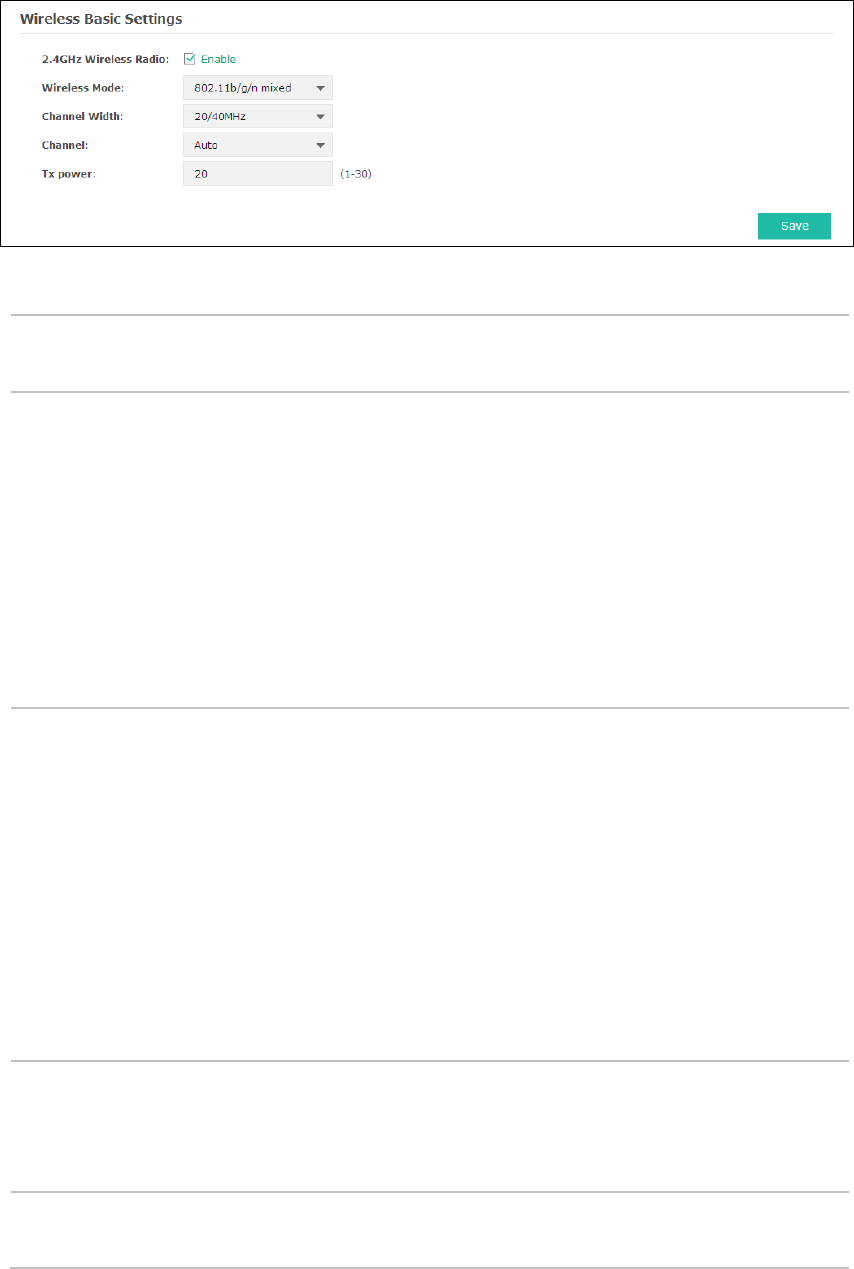
13
5.1.1 Wireless Basic Settings
Figure 5-3 Wireless Basic Settings
2.4GHz Wireless
Radio:
Check the box to enable 2.4GHz Wireless Radio.
Wireless Mode:
Select the protocol standard for the wireless network.
Wireless network created by the EAP is able to operate in the 2.4GHz frequency
The EAP supports 802.11b/g/n, 802.11b/g, and 802.11n standards. It is
recommended to select 802.11b/g/n, in which way clients supporting 11b, 11g
or 11n mode can access your wireless network.
EAP220 the wireless network can work within 2.4GHz and 5GHz frequency.
Wireless network of EAP220 operating at 5GHz frequency band supports
802.11a/n, 802.11a and 802.11n standards. It is
recommended to select
802.11a/n, in which way your wireless network can be connected by clients
supporting 11a or 11n mode.
Channel Width:
Select the channel width of this device. Options include 20MHz, 40MHz and
20/40MHz (this device automatically selects 20MHz or 40MHz, and 20MHz will
be used if 40MHz is not available). According to IEEE 802.11n standard, using a
channel width of 40MHz can increase wireless throughput. However, users
may choose lower bandwidth due to the following reasons:
1. To i
ncrease the available number of channels within the limited total
bandwidth.
2.
To avoid interference from overlapping channels occupied by other
devices in the environment.
3. Lower bandwidth can concentrate higher transmit power, increasing
stability of wireless links over long distances.
Channel:
S
elect the channel used by this device to improve wireless performance.
1/2412MHz means the Channel is 1 and the frequency is 2412MHz. The
channel number varies in different regions. By default, channel is automatically
selected.
Tx power:
Enter the transmit power value. By default, the value is 20. The maximum
transmit power may vary among different countries or regions.


















